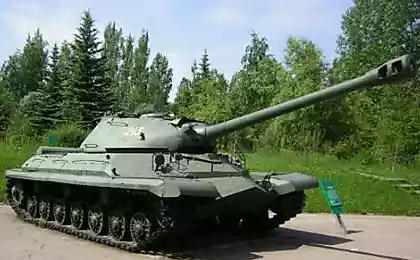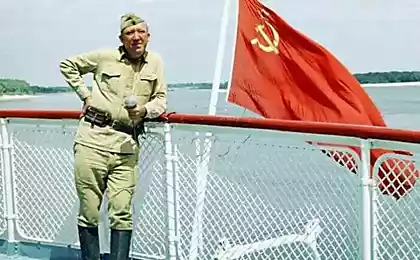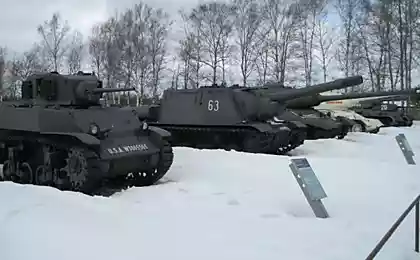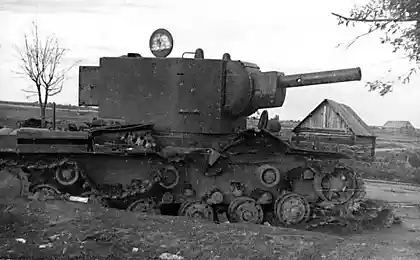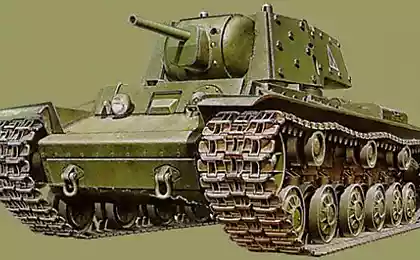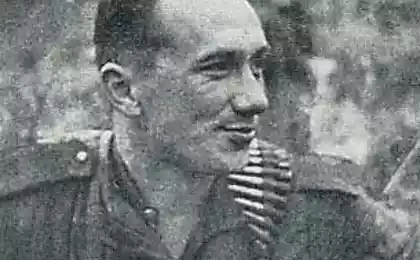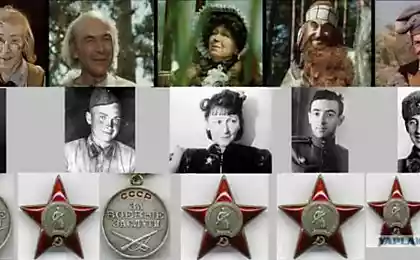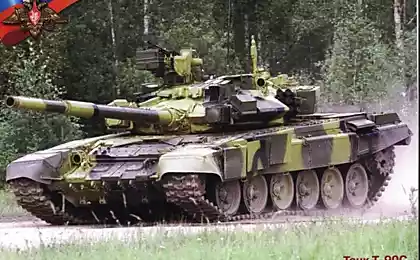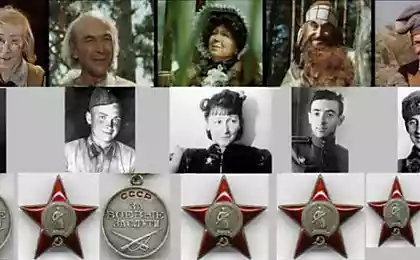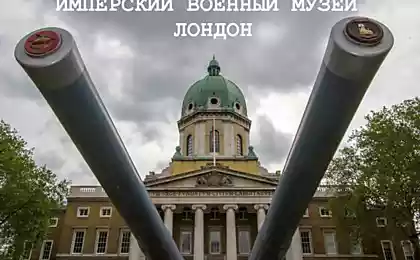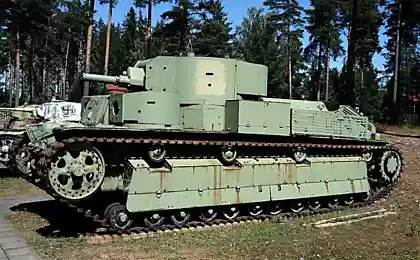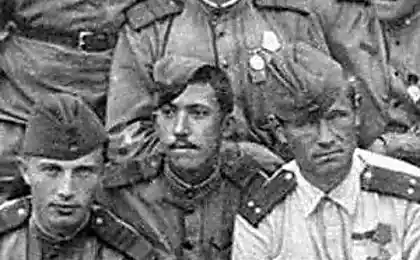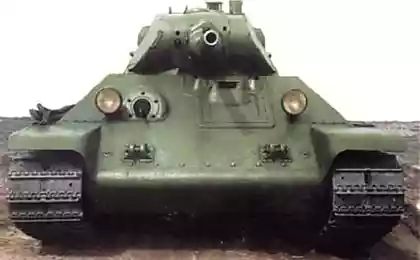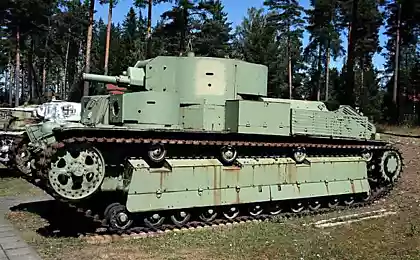714
How does the legendary tank of World
The first clash of combat vehicles of the Red Army and the German invaders the summer of 1941 caused the latter great surprise. But what was surprising: the T-34 was superior to any of the German tanks on arms, booking and maneuverability. Germans nicknamed invulnerable machine «wunderwaffe» or "miracle weapon". Most military historians agree that it was the T-34 tank was the most successful of the Second World War. So what was the secret of the Soviet "miracle"?

The birth of "Thirty»
Around the middle of 1931 the Red Army began to receive high-speed wheel-tracked tanks (BT) BT or various modifications. These tanks differed little from its progenitor - American tank, created by Walter Christie. The main advantage of machines BT series has a high maximum speed and agility, the ability to move and tracked and wheeled. His first baptism of BT-2 and BT-5 adopted in 1936 during the Spanish Civil War, then followed Soviet-Finnish war.
Despite the overall picture of the successful use of machines, they had quite a few complaints: body armor was inadequate and gun - feeble. Moreover, the Soviet intelligence reports on possible conflict with Germany, which were armed with armored tanks and PzIII PzIV. Series BT tanks require thorough modernization, and in 1937 the country's leadership has given the task of Kharkiv Design Bureau of the plant to create a tank, capable of overcoming the disadvantages of engineering prototypes. Design of the new tank began in late 1937, led the work of the famous designer and engineer Mikhail Koshkin.
By the beginning of 1938 a new tank was ready, he received double the factory name BT-20 / A-20, 25-mm frontal armor, innovative engine, a new gun and would like their "grandparents" to move as wheeled and crawler . The whole war machine turned out good, however, still bore the shortcomings of their predecessors - the armor 25 millimeters could not be perceived as a worthy means of protection from the guns of 45 millimeters or more. Therefore, in May 1938 at a meeting of the Committee of Defense of the USSR it was voiced by the modernization plan of the prototype A-20 - another increase in body armor and avoiding the wheel stroke for the sake of simplicity of design.
The new tank has received an index of A-32, it was similar in mass to the A-20, but after all the upgrades received a 76-mm cannon, increased booking - 45 millimeters - and incredibly powerful engine that allowed "Thirty" almost "dancing" on the field fight. In the future, the last modification was named A-34 or T-34, under this designation, and it made history. The first 115 pieces of T-34 left the assembly line in January 1940, but before the war, their number increased to 1110.
During the war, the production of T-34 is actually transferred to the Urals, as the Ural Tank Plant (UTZ now "Uralvagonzavod"), was the primary backup Kharkov plant, worry, for obvious reasons, not the best of times. From 1941 to 1945 in Nizhny Tagil have built tens of thousands of T-34. According to historians, one in three military machine was made precisely in the Urals.
Modification of the T-34-85 start off the assembly line Uralvagonzavod 2 months after was put into service. Summer of 1944, Ural designers were awarded the Order of Lenin for outstanding achievements in building design T-34 and the further improvement and improvement of its fighting qualities.

Equipment "miracle machine»
T-34 had a classic layout for the Soviet school of tank - aft transmission. Inside the tank is divided into four departments - administration, fighting, engine and gear. In the frontal part of the building has a place of the driver and radio operator, monitoring devices, compressed air cylinders for emergency starting, as well as mounted on the frontal armor of the gun. The fighting compartment was in the middle of the tank, there were the tank commander, who was also the gunner and the arrow tower, also served as the loader. In the tower, in addition to guns, and was part of the combat pack, and additional inspection instruments, and the hatch for the landing of the crew. The engine compartment is also located in the middle, but for the safety of the crew enclosing him a special removable baffle.
The armor protection of the body was made of rolled homogenous steel sheets located under strong inclination to give frequent bounce enemy shells. Circuit Protection Corps was 45 millimeters, which, coupled with slopes armor provides protection against the caliber of guns to 75 millimeters.
Armed with T-34 was a 76-millimeter cannon F-34, which is the first stage of the war all the German tanks punched in any projection. Only with the advent of "Tigers" and "Panthers" have appeared complexity of the instruments, which, however, are often solved maneuverable fight. Arsenal shells were as follows:
- High-explosive long-range Pomegranate PF-350 and PF-350A
- Grenade Blast old Russian sample F-354
- Armor-piercing tracer BR-350A
- Broneprozhigayuschy projectile BP-353A
- Bullet shrapnel W-354
In addition to tank gun T-34 is equipped with two machine guns DT 7, 62 millimeters, which is usually used for the suppression of manpower in the urban environment.
On the "miracle machine" installed 12-cylinder diesel engine with 450 horsepower. Considering the small mass of the tank - about 27-28 tons - the engine is allowed to feel equally confident and spring-autumn mudslides, and in the fields, and arable land. Military reports hold a lot of memories of the crew "tridtsatchetverok" which maneuverable battle - at high speed and short distance to the enemy tanks - works wonders. For example, a feat the crew modification of T-34 - T-34-85, under the command of Alexander Oskina. In the summer of 1944 they maneuver battle destroyed three new tank "King Tiger". Since the frontal armor of the German "cats" was too tough Oskina tank, he decided to get as close to your opponent and hit him in the less secure side that successfully did.

Modernization legend
Recent technological processing "Thirty" was the T-34-85, which was adopted by the USSR in 1944, and legally lifted only in 1993. Despite the significant changes the appearance of the car actually was just the new tower, which carried a more powerful 85-millimeter cannon - hence the name of the tank. Due to the larger tower in the tank to make room for the extra crew - gunner, allowing "unload" the tank commander. Slightly increased weight offset by increased engine power, and the new instrument was a worthy response, "Panther" and "Tiger».
This latest modification of the legendary T-34 is considered to be the crown of creation of the Soviet medium tank of World War II: the perfect combination of speed, maneuverability, firepower and simplicity of use. Tank used in the Korean and Vietnam wars, clashes between Israel and Egypt, in African conflicts.
In the postwar period, "the miracle of the Soviet engineering" was delivered in the Eastern bloc countries, Austria, Germany, China, at the moment still is in service with more than 20 countries. By the way, fighting machines "China" originated as the T-34. In the early 50-ies of the last century, the Soviet Union actually gave friendly to China all the documentation for the manufacture of the T-34. And inquiring mind hardworking Chinese people put on the flow of various modifications of the tank, which until recently bore the recognizable code "34" in the title.
Soviet, and then Russian school of tank building and designed the machine, anyway based on the creation ahead of his time, Mikhail Koshkin - the legendary T-34.
Source: www.rg.ru/2014/03/30/tank34-site.html
Posted in [mergetime] 1396370609 [/ mergetime]
All)

Source:

The birth of "Thirty»
Around the middle of 1931 the Red Army began to receive high-speed wheel-tracked tanks (BT) BT or various modifications. These tanks differed little from its progenitor - American tank, created by Walter Christie. The main advantage of machines BT series has a high maximum speed and agility, the ability to move and tracked and wheeled. His first baptism of BT-2 and BT-5 adopted in 1936 during the Spanish Civil War, then followed Soviet-Finnish war.
Despite the overall picture of the successful use of machines, they had quite a few complaints: body armor was inadequate and gun - feeble. Moreover, the Soviet intelligence reports on possible conflict with Germany, which were armed with armored tanks and PzIII PzIV. Series BT tanks require thorough modernization, and in 1937 the country's leadership has given the task of Kharkiv Design Bureau of the plant to create a tank, capable of overcoming the disadvantages of engineering prototypes. Design of the new tank began in late 1937, led the work of the famous designer and engineer Mikhail Koshkin.
By the beginning of 1938 a new tank was ready, he received double the factory name BT-20 / A-20, 25-mm frontal armor, innovative engine, a new gun and would like their "grandparents" to move as wheeled and crawler . The whole war machine turned out good, however, still bore the shortcomings of their predecessors - the armor 25 millimeters could not be perceived as a worthy means of protection from the guns of 45 millimeters or more. Therefore, in May 1938 at a meeting of the Committee of Defense of the USSR it was voiced by the modernization plan of the prototype A-20 - another increase in body armor and avoiding the wheel stroke for the sake of simplicity of design.
The new tank has received an index of A-32, it was similar in mass to the A-20, but after all the upgrades received a 76-mm cannon, increased booking - 45 millimeters - and incredibly powerful engine that allowed "Thirty" almost "dancing" on the field fight. In the future, the last modification was named A-34 or T-34, under this designation, and it made history. The first 115 pieces of T-34 left the assembly line in January 1940, but before the war, their number increased to 1110.
During the war, the production of T-34 is actually transferred to the Urals, as the Ural Tank Plant (UTZ now "Uralvagonzavod"), was the primary backup Kharkov plant, worry, for obvious reasons, not the best of times. From 1941 to 1945 in Nizhny Tagil have built tens of thousands of T-34. According to historians, one in three military machine was made precisely in the Urals.
Modification of the T-34-85 start off the assembly line Uralvagonzavod 2 months after was put into service. Summer of 1944, Ural designers were awarded the Order of Lenin for outstanding achievements in building design T-34 and the further improvement and improvement of its fighting qualities.

Equipment "miracle machine»
T-34 had a classic layout for the Soviet school of tank - aft transmission. Inside the tank is divided into four departments - administration, fighting, engine and gear. In the frontal part of the building has a place of the driver and radio operator, monitoring devices, compressed air cylinders for emergency starting, as well as mounted on the frontal armor of the gun. The fighting compartment was in the middle of the tank, there were the tank commander, who was also the gunner and the arrow tower, also served as the loader. In the tower, in addition to guns, and was part of the combat pack, and additional inspection instruments, and the hatch for the landing of the crew. The engine compartment is also located in the middle, but for the safety of the crew enclosing him a special removable baffle.
The armor protection of the body was made of rolled homogenous steel sheets located under strong inclination to give frequent bounce enemy shells. Circuit Protection Corps was 45 millimeters, which, coupled with slopes armor provides protection against the caliber of guns to 75 millimeters.
Armed with T-34 was a 76-millimeter cannon F-34, which is the first stage of the war all the German tanks punched in any projection. Only with the advent of "Tigers" and "Panthers" have appeared complexity of the instruments, which, however, are often solved maneuverable fight. Arsenal shells were as follows:
- High-explosive long-range Pomegranate PF-350 and PF-350A
- Grenade Blast old Russian sample F-354
- Armor-piercing tracer BR-350A
- Broneprozhigayuschy projectile BP-353A
- Bullet shrapnel W-354
In addition to tank gun T-34 is equipped with two machine guns DT 7, 62 millimeters, which is usually used for the suppression of manpower in the urban environment.
On the "miracle machine" installed 12-cylinder diesel engine with 450 horsepower. Considering the small mass of the tank - about 27-28 tons - the engine is allowed to feel equally confident and spring-autumn mudslides, and in the fields, and arable land. Military reports hold a lot of memories of the crew "tridtsatchetverok" which maneuverable battle - at high speed and short distance to the enemy tanks - works wonders. For example, a feat the crew modification of T-34 - T-34-85, under the command of Alexander Oskina. In the summer of 1944 they maneuver battle destroyed three new tank "King Tiger". Since the frontal armor of the German "cats" was too tough Oskina tank, he decided to get as close to your opponent and hit him in the less secure side that successfully did.

Modernization legend
Recent technological processing "Thirty" was the T-34-85, which was adopted by the USSR in 1944, and legally lifted only in 1993. Despite the significant changes the appearance of the car actually was just the new tower, which carried a more powerful 85-millimeter cannon - hence the name of the tank. Due to the larger tower in the tank to make room for the extra crew - gunner, allowing "unload" the tank commander. Slightly increased weight offset by increased engine power, and the new instrument was a worthy response, "Panther" and "Tiger».
This latest modification of the legendary T-34 is considered to be the crown of creation of the Soviet medium tank of World War II: the perfect combination of speed, maneuverability, firepower and simplicity of use. Tank used in the Korean and Vietnam wars, clashes between Israel and Egypt, in African conflicts.
In the postwar period, "the miracle of the Soviet engineering" was delivered in the Eastern bloc countries, Austria, Germany, China, at the moment still is in service with more than 20 countries. By the way, fighting machines "China" originated as the T-34. In the early 50-ies of the last century, the Soviet Union actually gave friendly to China all the documentation for the manufacture of the T-34. And inquiring mind hardworking Chinese people put on the flow of various modifications of the tank, which until recently bore the recognizable code "34" in the title.
Soviet, and then Russian school of tank building and designed the machine, anyway based on the creation ahead of his time, Mikhail Koshkin - the legendary T-34.
Source: www.rg.ru/2014/03/30/tank34-site.html
Posted in [mergetime] 1396370609 [/ mergetime]
All)

Source:
